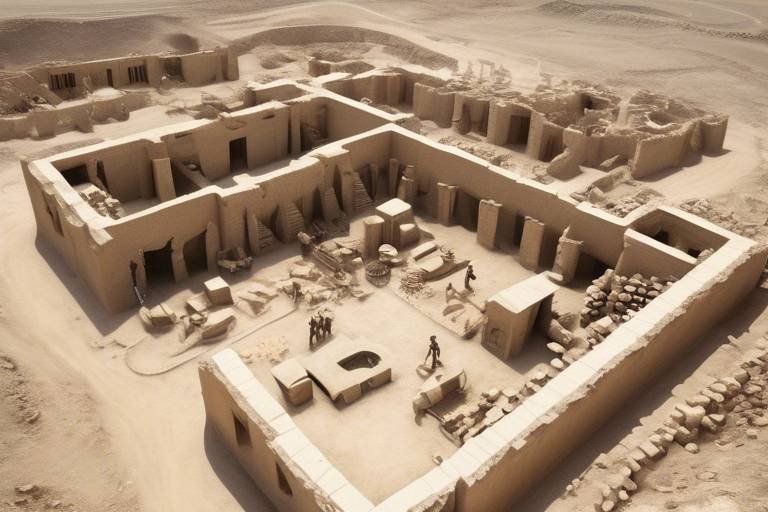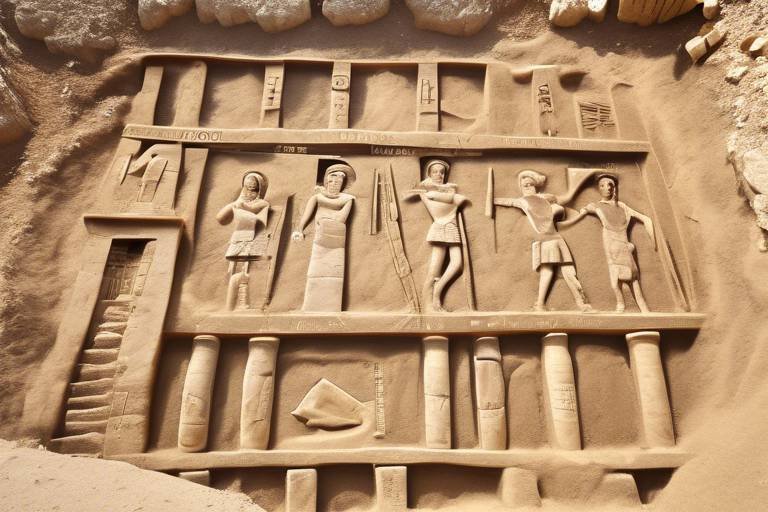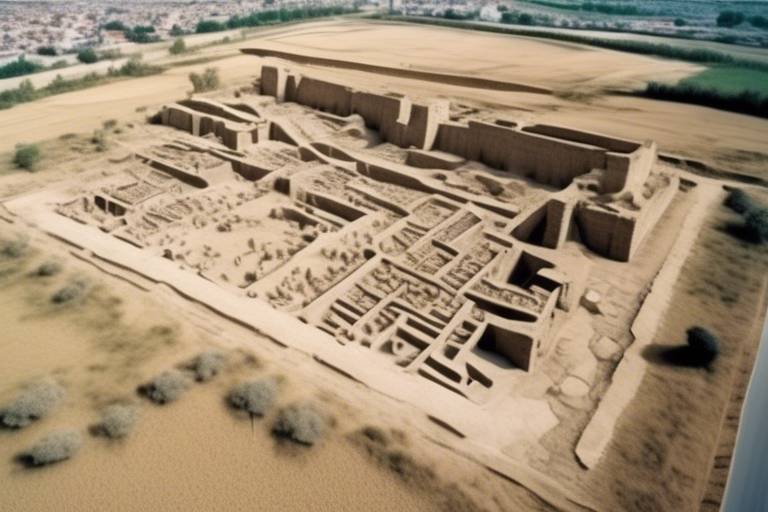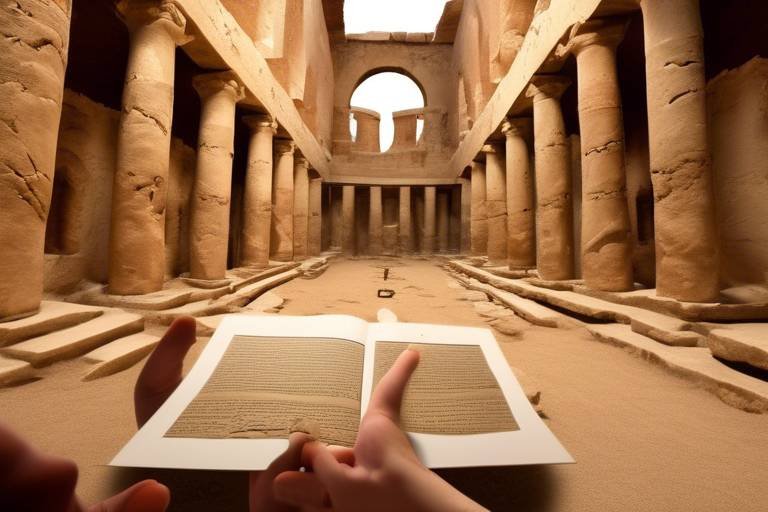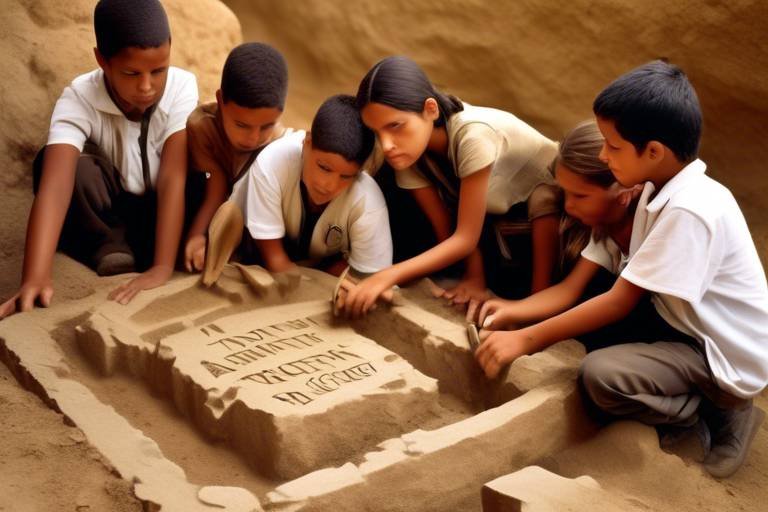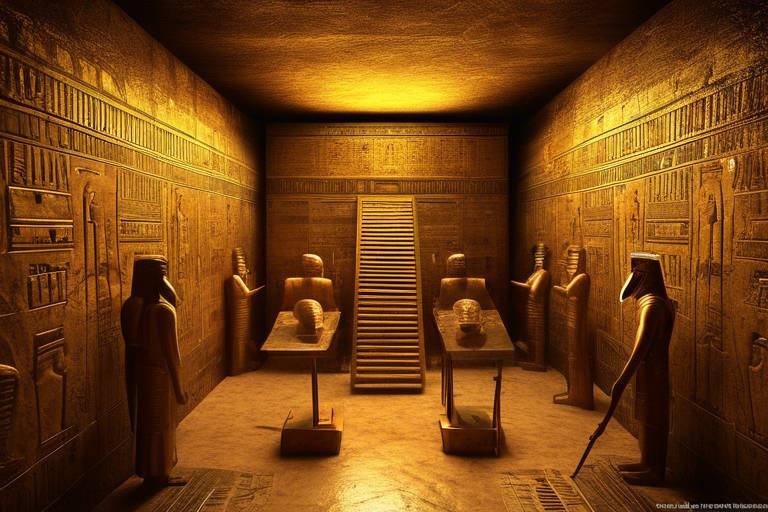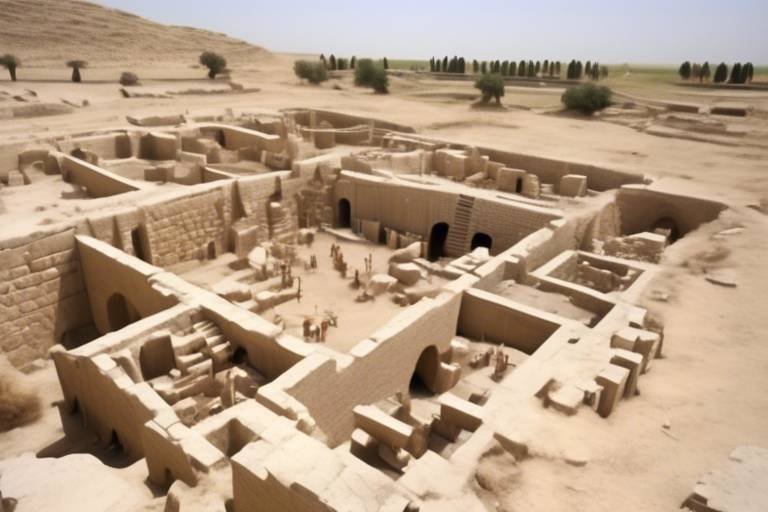The Mystery of Linear B - Understanding Mycenaean Greece
The Mystery of Linear B has long captivated historians and archaeologists, offering a tantalizing glimpse into the enigmatic world of Mycenaean Greece. This ancient script, with its intricate symbols and complex language, holds the key to unlocking the secrets of a civilization shrouded in mystery and intrigue. As we delve into the depths of Linear B, we embark on a journey through time, exploring the culture, economy, and administration of a society that once thrived in the Aegean region.

Origin and Discovery of Linear B
The origins of the mysterious script known as Linear B can be traced back to the ancient civilization of Mycenaean Greece. Discovered by archaeologist Sir Arthur Evans in 1900 during his excavations at Knossos on the island of Crete, Linear B was initially thought to be a form of writing known as Linear A. However, it was later revealed that Linear B was a distinct script used by the Mycenaeans, a Bronze Age civilization that flourished from the 15th to the 13th century BCE.
The decipherment of Linear B was a monumental achievement in the field of linguistics and archaeology. The breakthrough came in 1952 when British architect and amateur linguist Michael Ventris successfully cracked the code of Linear B, unraveling its complex system of syllabic signs. Ventris's groundbreaking work not only revealed the linguistic structure of the Mycenaean language but also provided valuable insights into the administrative and economic practices of the Mycenaean civilization.
Linear B inscriptions were primarily found on clay tablets used for administrative purposes, such as recording inventories, transactions, and personnel records. These tablets offer a unique glimpse into the daily life and governance of Mycenaean society, shedding light on aspects of their culture, economy, and social organization. The decipherment of Linear B has significantly enhanced our understanding of the Mycenaean world and its contributions to ancient Greek civilization.

Structure and Characteristics of Linear B
Linear B, the ancient script that offers a window into the Mycenaean civilization, is a fascinating system characterized by its unique structure and distinctive characteristics. This script, primarily used for administrative purposes, is composed of syllabic signs and ideograms, inscribed on clay tablets that provide valuable insights into the society and language of Mycenaean Greece.
The structure of Linear B is notable for its syllabic nature, where each symbol represents a combination of a consonant and a vowel sound. This feature distinguishes it from other ancient scripts, allowing scholars to piece together the phonetic values of the Mycenaean language. Additionally, Linear B incorporates ideograms, symbols that convey specific meanings or concepts, enhancing the richness and complexity of the script.
One of the remarkable characteristics of Linear B is the materials on which it was inscribed. The majority of Linear B texts have been found on clay tablets, which were often used for record-keeping and administrative purposes in Mycenaean society. These tablets, preserved over millennia, offer a direct glimpse into the economic transactions, religious practices, and social organization of the ancient Greeks.
Furthermore, the linear nature of the script, with symbols arranged in sequential order, reflects the pragmatic and utilitarian nature of Mycenaean writing. The systematic layout of Linear B texts suggests a structured approach to documentation and organization, shedding light on the administrative practices of the Mycenaean civilization.

Deciphering Linear B: Challenges and Breakthroughs
Deciphering the ancient script of Linear B posed significant challenges to scholars due to its unique characteristics and lack of a known bilingual text for comparison. The script, consisting of syllabic signs and ideograms, required a deep understanding of the Mycenaean language and culture to unlock its secrets. Researchers faced the daunting task of piecing together fragmented inscriptions on clay tablets, deciphering unfamiliar symbols, and unraveling the complex administrative and religious texts written in Linear B.
One of the major breakthroughs in deciphering Linear B came with the groundbreaking work of British architect and amateur linguist, Michael Ventris. Ventris, along with linguist John Chadwick, successfully cracked the code of Linear B in 1952, revealing it to be an early form of Greek. Their collaborative efforts and innovative approach to linguistic analysis revolutionized the field of ancient script decipherment, opening up a new chapter in understanding the Mycenaean civilization.
Ventris and Chadwick's decipherment of Linear B not only provided a key to unlocking the linguistic mysteries of Mycenaean Greece but also shed light on various aspects of the society, such as its economic systems, religious practices, and administrative structures. The deciphered tablets revealed detailed inventories, records of transactions, and lists of offerings to deities, offering valuable insights into the daily life and organization of the Mycenaean people.

Significance of Linear B in Mycenaean Studies
The significance of Linear B in Mycenaean Studies cannot be overstated. These ancient tablets inscribed with the mysterious script have been instrumental in piecing together the puzzle of Mycenaean civilization. Through the decipherment of Linear B, scholars have gained invaluable insights into various aspects of Mycenaean society, shedding light on its political structure, religious practices, economic activities, and social organization.
One of the key contributions of Linear B tablets lies in their ability to provide a glimpse into the administrative and bureaucratic systems of Mycenaean Greece. These inscriptions offer detailed records of commodities, personnel, and transactions, offering a window into the economic activities of the time. The tablets also reveal the hierarchical nature of Mycenaean society, with references to officials, workshops, and distribution centers.
Moreover, the religious significance of Linear B cannot be ignored. The tablets contain references to deities, religious ceremonies, and offerings, providing valuable information about the religious beliefs and practices of the Mycenaeans. By studying these inscriptions, researchers have been able to reconstruct the religious landscape of ancient Mycenae.
Furthermore, the linguistic aspects of Linear B have been crucial in understanding the Mycenaean language. The syllabic nature of the script, along with its ideograms representing objects and activities, has allowed scholars to decipher the phonetic values of the signs and unravel the linguistic code of the Mycenaeans. This linguistic breakthrough has opened up new avenues for studying the language and literature of this ancient civilization.
In essence, the significance of Linear B in Mycenaean Studies lies in its ability to act as a time capsule, preserving crucial information about a society long gone. These inscriptions serve as a bridge between the modern world and the ancient past, offering a unique perspective on the rich and complex culture of Mycenaean Greece.

Comparisons with Other Ancient Scripts
When comparing the Linear B script with other ancient scripts, such as Linear A, Cretan hieroglyphs, and later Greek alphabets, we can observe the evolution of writing systems in the Aegean region and their impact on cultural exchange. Linear B, used primarily for administrative purposes in Mycenaean Greece, differs from Linear A, which remains undeciphered and is believed to have been used for religious or ritualistic texts. The Cretan hieroglyphs, an earlier form of writing on Crete, showcase the diversity of scripts in the region before the adoption of Linear B. Moreover, the transition from Linear B to the Greek alphabets marks a significant shift in writing systems, reflecting changes in language and culture over time.

Legacy of Linear B in Modern Scholarship
The decipherment of Linear B has left an indelible mark on modern scholarship, revolutionizing our understanding of ancient civilizations and languages. The legacy of this ancient script extends far beyond the realms of Mycenaean studies, permeating into various disciplines such as linguistics, archaeology, and cultural history.
By unlocking the secrets of Linear B, scholars have been able to piece together the puzzle of Mycenaean society, shedding light on its political structures, religious practices, economic activities, and social organization. The insights gained from deciphering this script have not only enriched our knowledge of the Mycenaean world but have also contributed significantly to our understanding of the broader context of Greek culture and history.
The decipherment of Linear B has paved the way for a deeper exploration of ancient scripts and languages, opening up new avenues for research and discovery. Its influence can be seen in the meticulous study of other ancient writing systems, allowing for comparative analyses that illuminate the interconnectedness of ancient civilizations in the Aegean region.
Moreover, the decipherment of Linear B serves as a testament to human ingenuity and perseverance in unraveling the mysteries of the past. It stands as a beacon of inspiration for future generations of scholars and researchers, showcasing the transformative power of interdisciplinary collaboration in unraveling the enigmas of antiquity.

Unsolved Mysteries and Ongoing Research
The realm of Linear B is not devoid of enigmas and puzzles waiting to be unraveled. Despite the remarkable progress made in deciphering this ancient script, there are still lingering mysteries that continue to intrigue researchers and fuel ongoing investigations. One of the enduring enigmas pertains to the precise origins of the Mycenaean civilization and the extent of its connections with other ancient cultures. The intricate symbols and inscriptions found on Linear B tablets offer tantalizing clues, yet many questions remain unanswered.
Moreover, the purpose and function of certain ideograms and linguistic elements in Linear B continue to perplex scholars, prompting further analysis and interpretation. The intricate web of symbols and syllabic characters poses a challenge in fully comprehending the nuances of the Mycenaean language and society. Unraveling the complexities embedded within the Linear B script requires a meticulous and multidisciplinary approach, drawing upon expertise in linguistics, archaeology, and comparative studies.
Current research endeavors are focused on delving deeper into the intricacies of Linear B, utilizing advanced technologies and methodologies to extract new insights from existing artifacts and inscriptions. The collaborative efforts of scholars worldwide aim to shed light on unresolved mysteries surrounding Mycenaean Greece, offering fresh perspectives on its cultural practices, religious beliefs, and societal structures.
Exciting discoveries and breakthroughs in the field of Linear B studies continue to captivate the imagination of both academics and enthusiasts, showcasing the enduring allure of ancient civilizations and the enduring quest for knowledge. As ongoing research endeavors push the boundaries of our understanding, the enigmatic script of Linear B stands as a testament to the enduring legacy of the Mycenaean world, inviting us to embark on a journey of discovery and exploration.
Frequently Asked Questions
- What is Linear B?
Linear B is an ancient script used by the Mycenaean civilization in Greece during the Late Bronze Age. It was primarily used for administrative and economic purposes, providing valuable insights into the society and culture of that time.
- Who deciphered the Linear B script?
The decipherment of the Linear B script is credited to the efforts of archaeologist Michael Ventris and linguist John Chadwick. Their breakthrough in the 1950s unlocked the mysteries of this ancient writing system.
- What information do Linear B tablets reveal about Mycenaean society?
Linear B tablets contain records of economic transactions, inventories, and administrative details, shedding light on aspects such as trade, agriculture, governance, and religious practices within the Mycenaean civilization.
- How does Linear B differ from other ancient scripts?
Linear B differs from contemporaneous scripts like Linear A and later Greek alphabets in terms of its language, structure, and usage. Comparisons with other scripts provide valuable insights into the evolution of writing systems in the Aegean region.
- What ongoing research is being conducted on Linear B?
Current research on Linear B focuses on refining translations, exploring new tablets, and deepening our understanding of Mycenaean society. Scholars continue to unravel the complexities of this script to uncover more about the ancient world.


